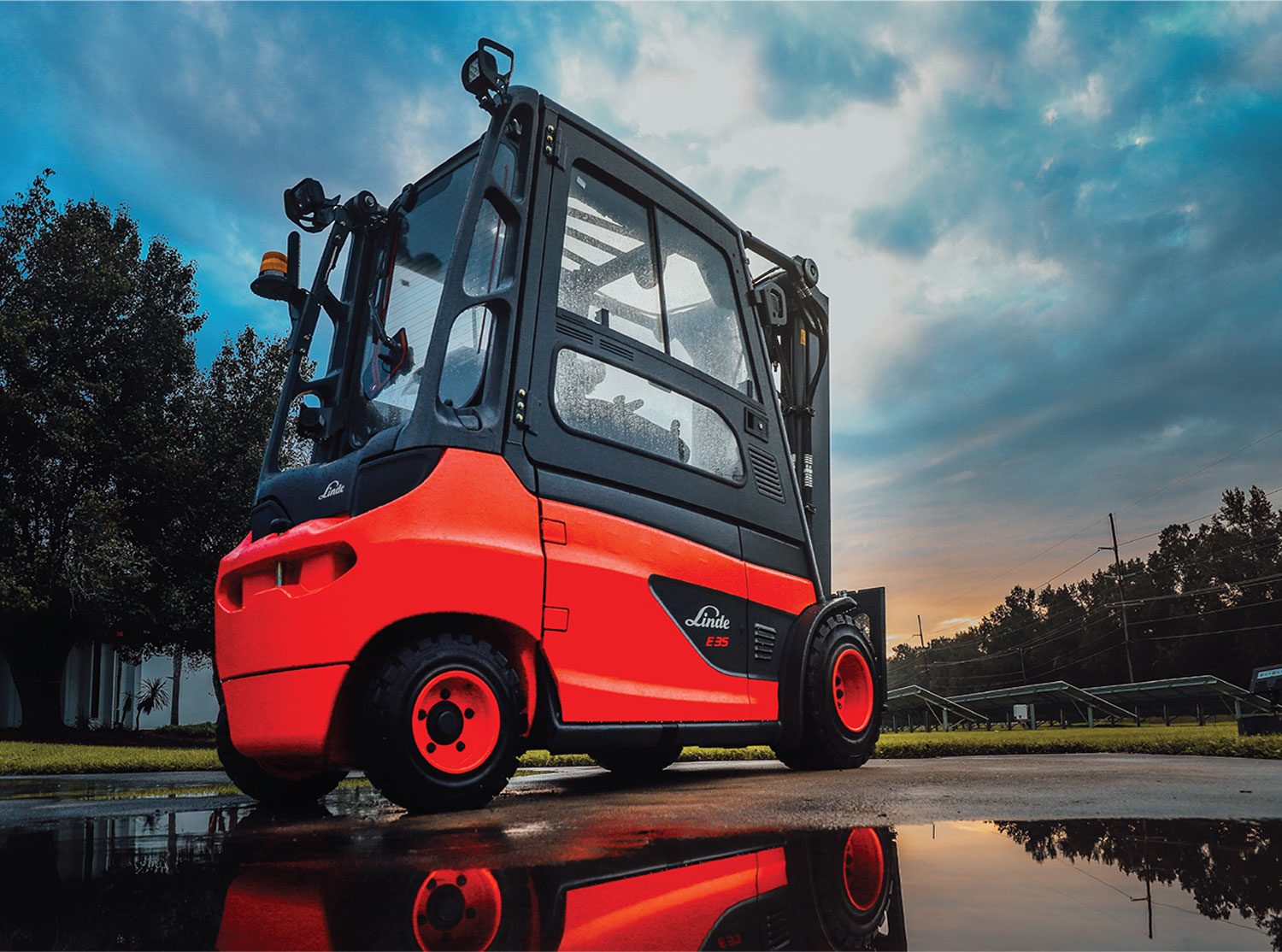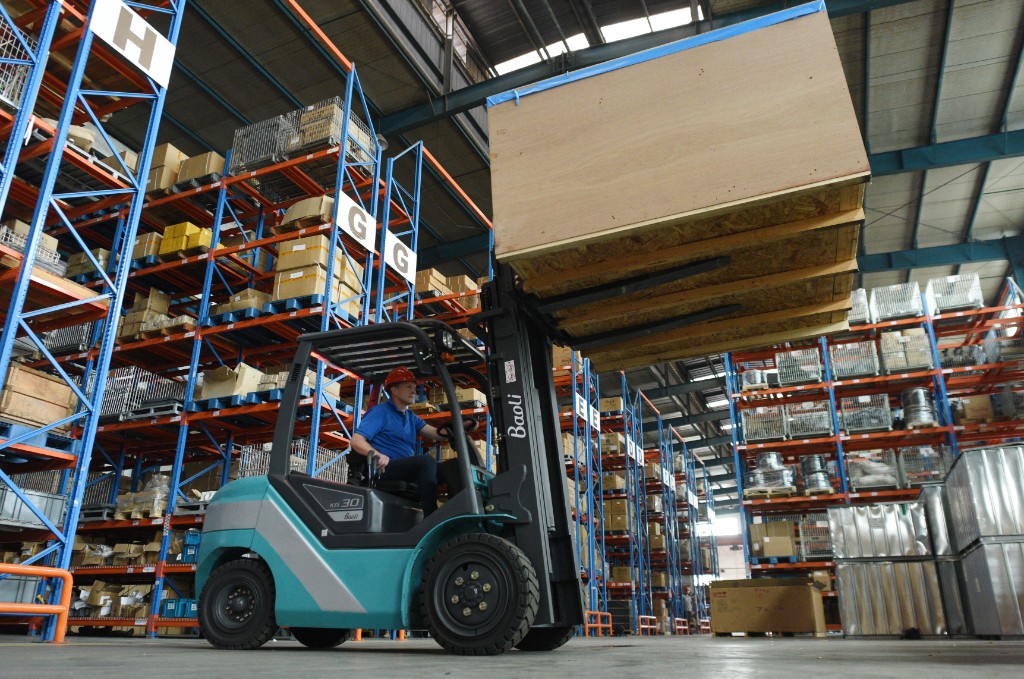Updated: 7/10/23
We have entered that time of the year where many are experiencing the unpredictability of mother nature. Whether it be extreme spikes in temperature or the sudden torrential downpour, the weather can often catch us off guard. When operating machinery, like a forklift, it is imperative to be alert on any given day, but especially when the weather takes a turn. Below we highlight several tips and considerations for operating a forklift in the rain.
Prepare
- Clear visibility: Ensure your forklift’s lights, wipers, and mirrors are functional and properly adjusted. Optimal visibility is vital in rainy conditions.
- Secure your load: Rain can make surfaces slippery, increasing the risk of load shifts. Double-check and secure your load to prevent accidents.
Stay in constant contact with co-workers and alert them when you’re approaching or operating in a specific area. Ensure everyone is aware of the forklift’s presence.
Eliminate Distractions
Keeping focused on your equipment and your surroundings should always be a priority while operating a forklift. That means limiting the amount of outside distractions is crucial to maneuver the truck effectively and safely. Make sure you are wearing proper attire while working in outside conditions so that you are protected inside your workspace. For instance, not keeping your head covered can cause a decrease in visibility and focus, creating a potential hazard. Also, strong winds can be associated with heavy rains, so wearing water and windproof jackets and pants will also aide in protection and less distractions.
To decrease the likelihood of taking your eyes off the road, it is a good idea to leave cell phones and audio devices off the truck. Eliminating those appliances will help keep you focused on the job at hand. In addition, keeping food and drinks out of the workspace will prevent the urge to take your hands away from the control deck, thus keeping you in control of your forklift.
Watch your Speed
Just as we slow our speed in our car during rainy weather, the same applies for maneuvering a forklift. Even with the latest improved features on Linde trucks, of automatic acceleration and deceleration that deliver smoother transitions with speed, wet weather can still greatly affect the driving experience. Operating the forklift cautiously, during compromised weather, will ultimately make you, the operator, more effective and efficient over the course of the day as well as decreasing the probability of an accident.
Be Alert to Driving on Multiple Surfaces
If you are operating between multiple terrains (indoor and outdoor applications) it is extremely important to be aware of the surfaces you are driving on. When transporting loads back and forth from the yard to the warehouse, the inclination may be to increase speed since the surface you are driving on is now dry. However, the wheels on the forklift will still be very wet and will make abrupt stops difficult. Maintaining consistent, slower speeds, while transitioning from outdoors to indoors, will create a more secure logistical operation.
Watch for hazards: Be extra vigilant for puddles, wet floors, or slippery slopes and adjust your route if necessary.
With the Linde internal combustion trucks, you can automatically rely on the ability of being prepared to deliver solid production in any weather condition. But with the Linde outdoor electric trucks, you’re also assured a precise and agile operating experience with Linde’s robust drive technology, backed by attentive traction control and precise navigation.



